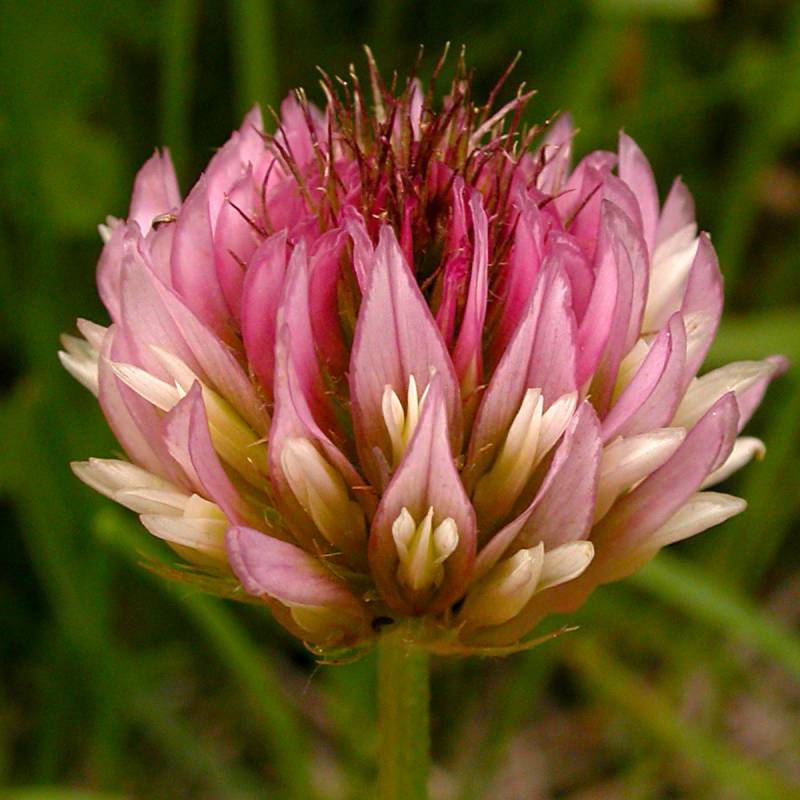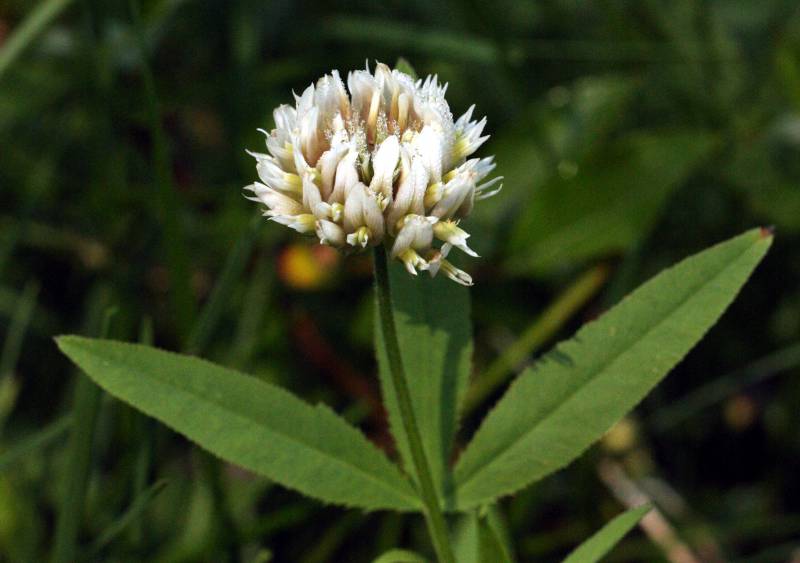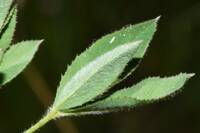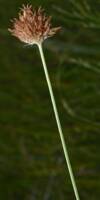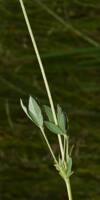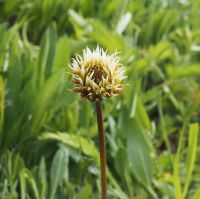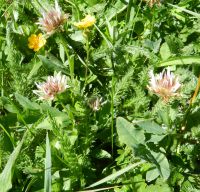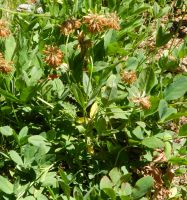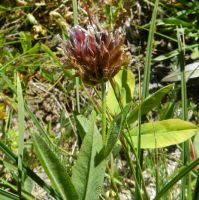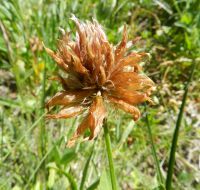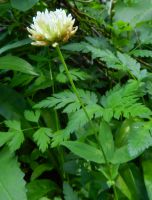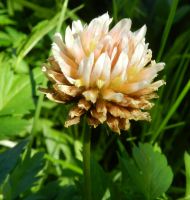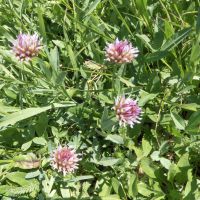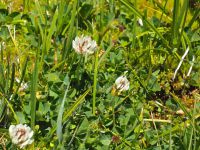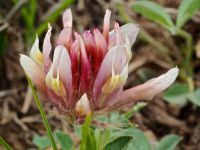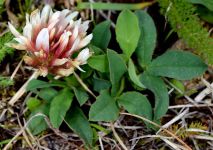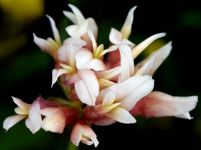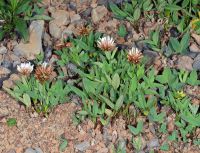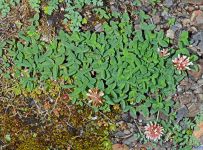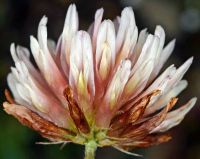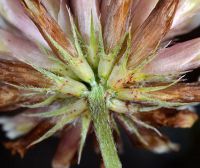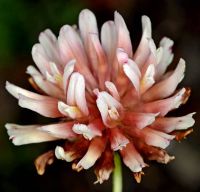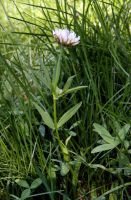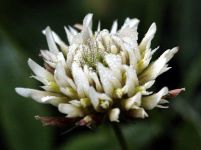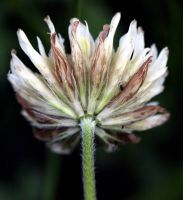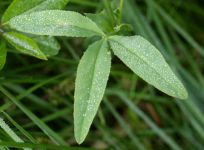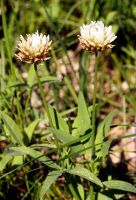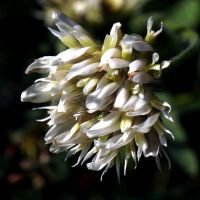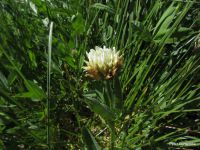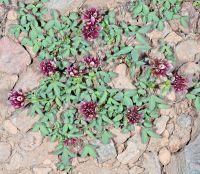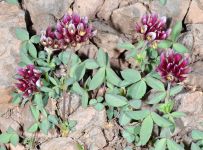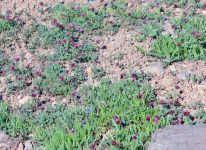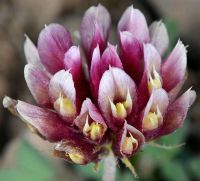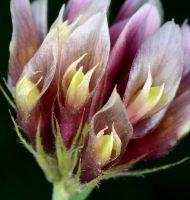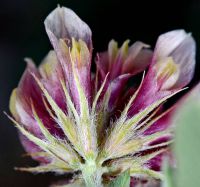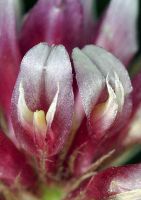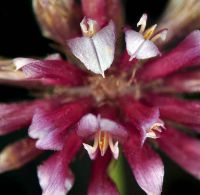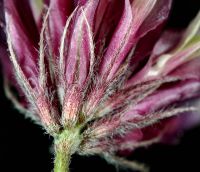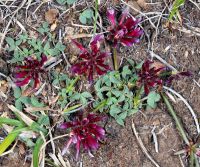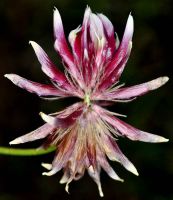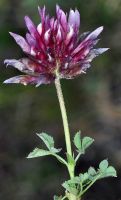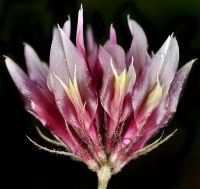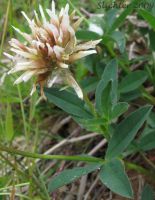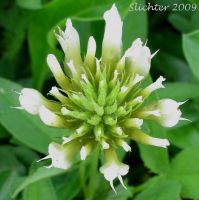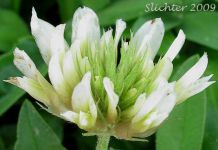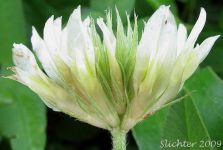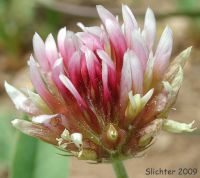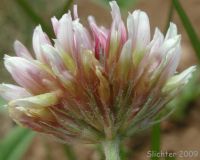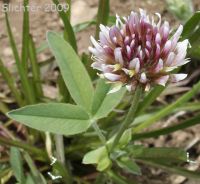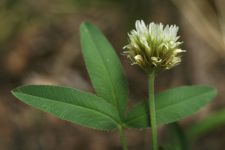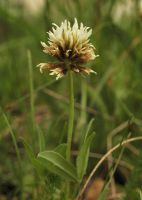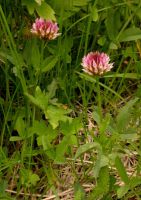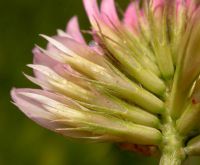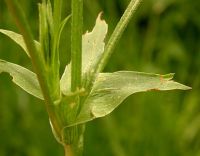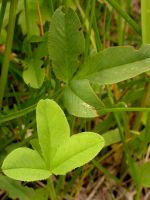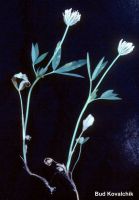Distribution: Occurring on both sides of the Cascades crest in Washington; British Columbia to California, east to the Rocky Mountains.
Habitat: Meadows and valleys, lower mountains to subalpine slopes.
Flowers: May-August
Origin: Native
Growth Duration: Perennial
Conservation Status: Not of concern
Pollination: Bumblebees, bees, butterflies, flies
Pubescent perennial from a taproot with a branched crown, the stems 5-30 cm. tall, decumbent and often trailing and stoloniferous.
Leaves trifoliate, leaflets narrowly elliptic-lanceolate to oblanceolate, 2-6 cm. long, serrulate to entire; stipules ovate-lanceolate, 1-3 cm. long, lacerate to entire.
Heads terminal on the stems, 20- to 70-flowered, 1.5-3.5 cm. broad, sub-globose; peduncles usually exceeding the leaves; flowers creamy-yellow to purplish, 11-18 mm. long, erect to reflexed; pedicels 1-3 mm. long; calyx hairy, half as long as the corolla, the 5 teeth 2-4 times as long as the tube, awl-shaped, the upper 2 reduced; banner acute, wings acute and narrow, keel acute to rounded.
Pod 1- to 4-seeded.
Publication: Fl. N. Amer. (Torr. & A. Gray) 1(2): 314. 1838.
-
var. longipes – long-stalked clover
 Endemic to the Cascades Mountains in Washington.
Endemic to the Cascades Mountains in Washington. -
var. multiovulatum – long-stalked clover
 Occurring in the Olympics and Cascades mountains in Washington; Washington to northwest Oregon.
Occurring in the Olympics and Cascades mountains in Washington; Washington to northwest Oregon. -
var. multipedunculatum – long-stalked clover
 Occurring in the Cascades Mountains in Washington; Washington to California.
Occurring in the Cascades Mountains in Washington; Washington to California.
PNW Herbaria: Specimen records of Trifolium longipes in the Consortium of Pacific Northwest Herbaria database
WA Flora Checklist: Trifolium longipes checklist entry
OregonFlora: Trifolium longipes information
E-Flora BC: Trifolium longipes atlas page
CalPhotos: Trifolium longipes photos

